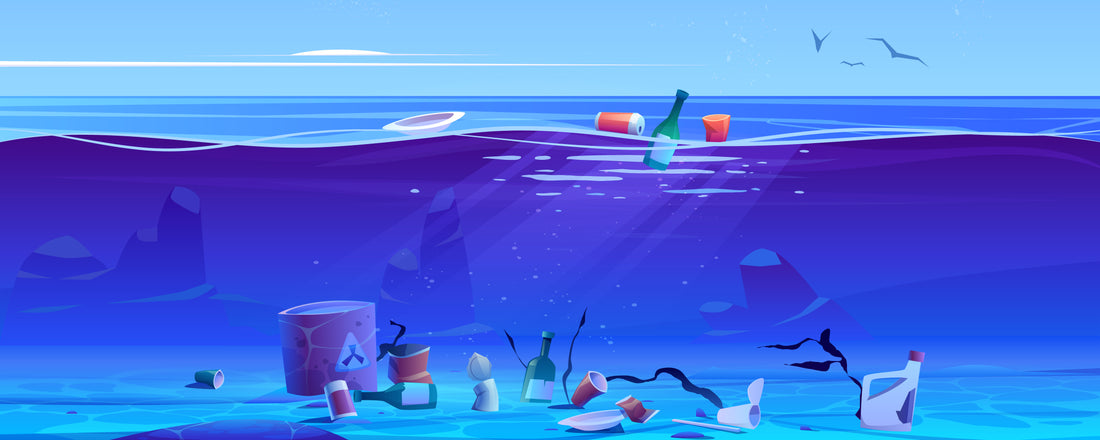
Ocean Plastic Pollution
The Plastic Problem: Too Much of a Good Thing
Plastic's durability and versatility make it incredibly useful, but its advantages come at a high cost. Made from petroleum, plastic contributes to our reliance on fossil fuels and releases harmful hydrocarbons into the atmosphere. Despite its reputation as a “use and toss” material, plastic is engineered to last forever, leading to a significant environmental burden. It doesn't naturally decompose and often ends up in landfills and oceans, breaking down into toxic chemicals that harm ecosystems.
Recycling rates for plastic are dismally low, with only 31% of discarded water bottles recycled in 2009 according to the EPA. Moreover, the energy required to recycle plastic raises questions about its overall sustainability.
Plastic: A Growing Threat to Our Oceans
Plastic pollution is highly visible along coastlines, with debris like Styrofoam, bottle caps, and disposable utensils washing ashore. The scale of the problem is staggering:
- Between 100 and 200 billion pounds of plastic are produced annually.
- An estimated 10% of this plastic ends up in the oceans each year.
- Around 20% comes from ships and offshore platforms, while 80% originates from land, flowing through storm drains, rivers, and bays.
This waste eventually accumulates in the ocean, where it becomes trapped in vast rotating currents known as gyres.
Oceanic Gyres: The World's Plastic Traps
Earth’s oceans are crisscrossed by a complex network of currents, creating large systems called gyres—massive, slow-moving whirlpools where plastic debris accumulates. The North Pacific Subtropical Gyre, also known as the Great Pacific Garbage Patch, is one of the most infamous. In some areas, plastic outnumbers plankton by a ratio of six to one.
Discovered in 1997 by Captain Charles Moore, this gyre is home to two enormous garbage patches: the Western Pacific Garbage Patch, estimated to be twice the size of Texas, and the Eastern Patch, circulating between Hawaii and Japan. Similar gyres exist in the South Pacific, North and South Atlantic, and Indian Oceans, all contributing to the growing plastic problem.
Plastic's Toxic Legacy
Plastic pollution does more than mar the beauty of our oceans; it chemically pollutes them as well. Studies have found that plastic breaks down more quickly than previously thought, releasing toxic chemicals like polystyrene derivatives into the water. This chemical leaching poses a threat to marine life and potentially human health as these toxins enter the food chain.
The Impact on Marine Life and Human Health
Plastic in the ocean affects nearly all marine species. It has been found in 44% of seabirds, 22% of cetaceans, all species of sea turtles, and many types of fish. Marine animals often mistake plastic for food, leading to fatal blockages in their digestive systems, and genetic-altering chemicals in plastic can impact fish reproduction. As plastic warms seawater, it disrupts marine ecosystems, threatening both fisheries and the global food supply.
The toxic chemicals from plastic debris may also accumulate in the marine food chain, ultimately making their way into the seafood we consume, with potential long-term health consequences for humans.
The Solution: Preventing Plastic Pollution
While cleaning up existing plastic from the oceans is impractical, we can take steps to prevent further pollution:
- Reduce or eliminate the use of petroleum-based plastics. Opt for reusable items whenever possible.
- Choose biobased or certified compostable plastics over traditional plastics to minimize environmental impact.
- Support businesses that offer sustainable plastic alternatives and encourage those that don't to make the switch.
- Recycle plastic responsibly to reduce the amount of waste entering the environment.
By making conscious choices, we can work together to curb plastic pollution and protect our oceans for future generations.
